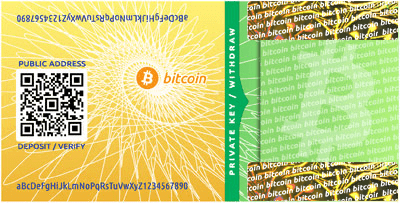Paper Wallets Explained
Even for people who understand a great deal about bitcoin and cryptocurrency in general, storage can be a complicated concept. It usually takes a little bit of time to get used to the idea that you don’t actually “possess” cryptocurrency in a tangible form, even if you “own” it. It’s partly for this reason that we’ve covered storage options before. But here, we’ll be exploring a particular type of storage that is commonly misunderstood: the paper wallet.
In our previous article on storage, we listed paper wallets as a form of cold storage, which is to say, “any form of storage of your cryptocurrency that is kept entirely offline.” Many people prefer this general type of storage simply because it is invulnerable to hacking or crashing of any kind. It’s on odd blend between the most cutting-edge, fully digital currency and a very old-fashioned model of wealth security. In many cases, however, it makes perfect sense.
So how, precisely, does a paper wallet work? What really is it aside from just another cold storage method? If you’re asking yourself these questions as you read about cryptocurrency, you’re certainly not the only one. So we’ll speak to the general definition first.
The best definition may come from a post on bitcoin acquisition that describes paper wallets as a cheap and secure way of storing your bitcoins. It goes on to explain that when you request a paper wallet for a transaction, it generates an address for you (where your quantity of bitcoin is held digitally), and also provides you with two QR codes. One of these is for the aforementioned public address, and the other is your private key that you use to authorize transactions relating to that address.
Using this definition you can see that a paper wallet isn’t actually any different in substance or practice from a digital one. It simply comes in a different form. A paper wallet is quite literally a slip of paper. Naturally, this is kept offline, and thus safe from all digital security concerns. It does, however, make your bitcoin vulnerable to physical loss or corruption. If you were to spill something on a paper wallet, for instance, or if it were to fall out of your pocket, go through a laundry cycle, etc., you would permanently lose the codes that give you access to the bitcoin you already paid for.
For this reason, many people ultimately choose to “back up” their paper wallets with extra copies. You can read easily about how to generate paper wallets (you need to go through a process online and have them printed, usually, but it’s all fairly straightforward). And as one account points out, once the wallet is set up, you can print the page or make multiple copies, such that losing or damaging one is not the end of the world. This way, you could keep one folded inside your actual wallet, if you want it on you, and you can store extra copies in file or a secure hiding place somewhere.
Some argue that paper wallets will ultimately be phased out as people get more used to using bitcoin and digital wallets take over. This may be the case. For now however, a paper wallet is an excellent option if you’re concerned about security.




